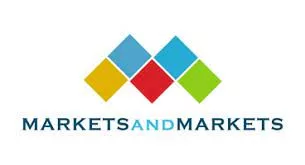Brazilian Coatings Industry Sees Slower Growth
SÃO PAULO, Brazil - After the highly positive results in 2010, the Brazilian coatings industry foresaw a good performance in 2011. However, the growth rate diminished dramatically this year, as has been the case with the economy. During the ABRAFATI Forum of the Coatings Industry, held August 25, 2011, in São Paulo, Brazil, forecasters presented more modest numbers.
“In the first half of this year, sales of residential coatings increased by only 0.5 percent compared to the same period in 2010. We should see a slight increase this second semester that will lead to a 1 percent increase for the year,” said Dilson Ferreira, Executive President of ABRAFATI – Brazilian Coatings Manufacturers Association.
After impressive growth in 2010, which exceeded 10 percent, the situation this year is different. “Due to the present uncertainties and the delicate international scenario, consumers are adopting a more conservative attitude by delaying purchases of coatings for remodels and self building. Similarly, retailers avoid keeping stock and replace products more slowly,” Ferreira explained. “However, we believe business will pick up at a stronger pace next year, when we expect a 4 percent increase in sales.”
Among the positive factors that will maintain the high level of sales of residential coatings – above one billion liters a year – is the priority the Brazilian government has given to construction as an instrument to foster economic and social development, as has been evidenced by the launching of the housing program Minha Casa Minha Vida 2 and the extension of the IPI tax reduction (Industrialized Product Tax).
The overall growth of the coatings industry this year should be 1.3 percent, reaching 1.377 billion liters, whereas a 4 percent expansion of sales is expected in 2012. “The outlook is still positive, considering that the unique characteristics of 2010 should not be repeated any time soon. It is important to stress that, in addition to the great events we will have until 2022, which will ensure a sustainable growth, the structural reasons that stimulate sales will still be present for many years to come. Among these factors, the most noteworthy are: investments in housing and infrastructure, the amplification of segments related to oil exploration and distribution, the strengthening of the internal market, and the growth of the middle class,” concluded Ferreira.
“In the first half of this year, sales of residential coatings increased by only 0.5 percent compared to the same period in 2010. We should see a slight increase this second semester that will lead to a 1 percent increase for the year,” said Dilson Ferreira, Executive President of ABRAFATI – Brazilian Coatings Manufacturers Association.
After impressive growth in 2010, which exceeded 10 percent, the situation this year is different. “Due to the present uncertainties and the delicate international scenario, consumers are adopting a more conservative attitude by delaying purchases of coatings for remodels and self building. Similarly, retailers avoid keeping stock and replace products more slowly,” Ferreira explained. “However, we believe business will pick up at a stronger pace next year, when we expect a 4 percent increase in sales.”
Among the positive factors that will maintain the high level of sales of residential coatings – above one billion liters a year – is the priority the Brazilian government has given to construction as an instrument to foster economic and social development, as has been evidenced by the launching of the housing program Minha Casa Minha Vida 2 and the extension of the IPI tax reduction (Industrialized Product Tax).
The overall growth of the coatings industry this year should be 1.3 percent, reaching 1.377 billion liters, whereas a 4 percent expansion of sales is expected in 2012. “The outlook is still positive, considering that the unique characteristics of 2010 should not be repeated any time soon. It is important to stress that, in addition to the great events we will have until 2022, which will ensure a sustainable growth, the structural reasons that stimulate sales will still be present for many years to come. Among these factors, the most noteworthy are: investments in housing and infrastructure, the amplification of segments related to oil exploration and distribution, the strengthening of the internal market, and the growth of the middle class,” concluded Ferreira.
Looking for a reprint of this article?
From high-res PDFs to custom plaques, order your copy today!




